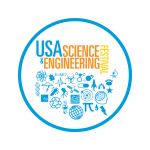By Nifty Fifty Host Carol Bengle Gilbert
Very often, even the host can’t helped but be inspired by the Nifty Fifty talks. Monday, I listened to Dr. Ellen Stofan, NASA’s chief scientist, address middle school students at the Nysmith School for the Gifted in Herndon, Virginia. The school decided to announce the science fair winners in conjunction with our event. (The kids in front of our sign in the photo are a few of the many winners.) This was a fun touch!

Her talk brought out many interesting aspects of the work NASA does, but it was a student comment that really got me thinking. Dr. Stofan had explained the importance of polar ice caps to global warming, noting how their white color reflects light; if they melt, she pointed out, that light will be absorbed, raising Earth’s temperature. A girl raised her hand and asked, “Why don’t we all paint our roofs white?”
This seemed to me like an inspired observation, though I don’t know if her awareness came to her as a result of the talk or was something she’d previously read. In any case, it seems like the kind of question that inspires follow-up. Since there is evidence that white roofs can help combat global warming, this idea is the type a teen could turn into a community service project by investigating cost-effective ways to accomplish it and promoting them in the community. This kind of inspiration is the seed of innovation. Wouldn’t it be great if kids followed-up Nifty Fifty talks with research on inspirations like this? Let’s say white roofs would help stave off global warming (there seems to be mixed evidence)… can’t you see a bunch of seventh graders researching cost effective plans for whitening roofs and educating their communities about them? I can. I hope teachers lucky enough to have a Nifty Fifty speaker at their schools keep an ear open for questions like this, questions that show students are really thinking about what they’ve heard. Then maybe they’ll take the plunge and nudge those kids to take their inspirations out of the classroom and into their communities.


































